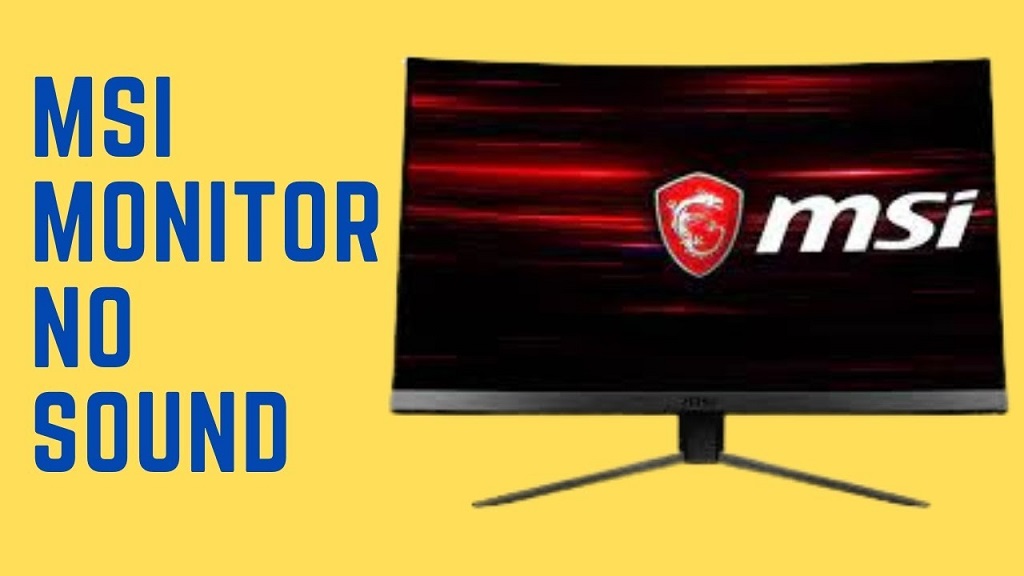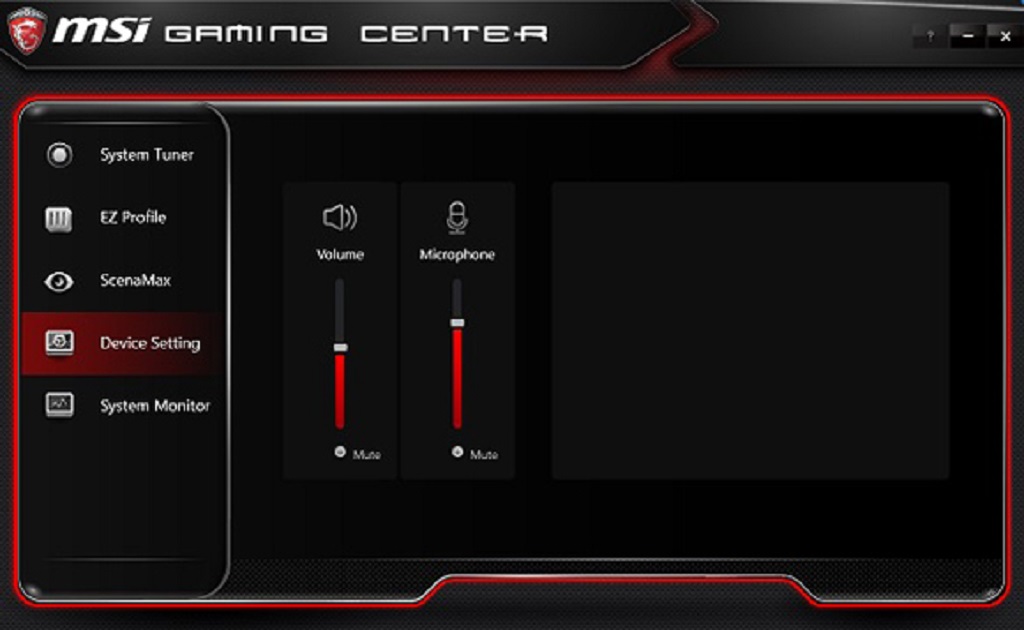
06 Feb How to Activate Sound on MSI Monitor: Easy Steps
To get sound on an MSI monitor, connect speakers or headphones to the audio output or use an HDMI cable for audio and video transmission. Here is a brief guide to setting up sound on an MSI monitor.
MSI monitors provide great visual experiences with high-quality display, but sometimes users may face difficulties setting up sound. Whether watching a movie, playing your favorite game, or simply listening to music, having sound enhances your overall experience.
This guide will walk you through the steps to get sound on an MSI monitor. From connecting speakers or headphones to adjusting audio settings, we will cover everything you need to know to get your audio up and running. Let’s dive in and explore how to get sound on an MSI monitor.
Choosing The Right Connection
Selecting the right connection is crucial to ensuring sound on an MSI monitor, a topic often covered on resources like https://ask4files.com/. Use an HDMI or DisplayPort cable for high-quality audio and video output. Additionally, make sure the audio settings on your computer are configured to the monitor to achieve optimal sound performance. This approach ensures that both visual and audio aspects work seamlessly for an enhanced user experience.
Analog Vs. Digital
When it comes to getting sound on your MSI monitor, one of the first things you need to consider is the type of connection you will use. There are two main types: analog and digital. Let’s take a closer look at each one:
Analog Connection
Analog connections have been around for a long time and are still commonly used. These connections use a standard 3.5mm audio jack that you plug into your computer or media device. The audio signal is analog, meaning it is represented by continuously varying voltages.
With an analog connection, you will need to use separate audio cables to connect your MSI monitor to your computer or media device. These cables usually have a green connector at one end, which you plug into your monitor and another 3.5mm audio jack that you plug into your computer’s or media device’s audio output. Using analog connections, you can get sound on your MSI monitor without any additional setup or configuration.
Digital Connection
On the other hand, digital connections offer a more advanced and convenient solution for getting sound on your MSI monitor. Two popular digital connection options are HDMI and DisplayPort. These connections transmit digital audio and video signals using a single cable, eliminating the need for separate audio cables.
HDMI
HDMI stands for High-Definition Multimedia Interface. This versatile connection can transmit high-quality audio and video signals and is commonly found on most modern devices. To use HDMI to get sound on your MSI monitor, simply connect one end of an HDMI cable to your computer or media device and the other end to the HDMI input on your monitor.
DisplayPort
DisplayPort is another digital connection option that delivers high-definition audio and video signals. It is often found on high-end graphics cards and some MSI monitors. To get sound on your MSI monitor using DisplayPort, you will need a DisplayPort cable. Connect one end of the cable to your computer or media device and the other end to the DisplayPort input on your monitor.
In conclusion, choosing the right connection is crucial for getting sound on your MSI monitor. Both analog and digital connections have their pros and cons, so it’s important to consider your specific needs and the capabilities of your devices before making a decision.
Enabling Sound On Your Msi Monitor
If you own an MSI monitor and want to enjoy sound along with your visual experience, you’ll need to enable the sound settings on your device. Sometimes, the issue might be related to the input source, so it’s essential to know how to change the input settings on your MSI monitor as well. By going through a few simple steps, you can quickly get sound output from your MSI monitor and enhance your multimedia experience. In this article, we will guide you through the process of enabling sound on your MSI monitor, ensuring that you can enjoy both the sights and sounds of your favorite content, while also providing information on how to change the input settings if necessary.
Accessing Monitor Settings
Before adjusting the sound output on your MSI monitor, you need to access the monitor settings. Follow these steps to access the settings:
- Power on your MSI monitor and ensure that it is connected to your computer or other compatible devices.
- Locate the control buttons on your monitor. These buttons are usually located either on the front or bottom edge of the display.
- Press the menu button on your monitor’s control panel to bring up the settings menu.
- Using the arrow buttons, navigate through the menu options until you find the audio or sound settings.
- Once you have selected the audio settings, press the enter or OK button to enter the sub-menu.
Adjusting Sound Output
Now that you have accessed the audio settings on your MSI monitor, it’s time to adjust the sound output according to your preferences. Follow these steps to adjust the sound:
- In the audio settings sub-menu, you will typically find options such as volume, balance, and equalizer settings.
- Use the arrow buttons to navigate through these options and select the desired setting to adjust.
- Once you have selected the setting you want to adjust, use the arrow buttons or the plus and minus buttons to increase or decrease the value.
- Continue adjusting the different settings as per your preference until you achieve the desired sound output.
- Once you are satisfied with the sound settings, navigate to the exit or save option and press the enter or OK button to save the changes.
After following these steps, you should have successfully enabled sound on your MSI monitor and customized the sound output to suit your preferences. Whether you are gaming, watching movies, or listening to music, the enhanced audio experience will elevate your overall enjoyment and immersion. Now, sit back, relax, and dive into the captivating world of audio-visual pleasure offered by your MSI monitor.
Troubleshooting Sound Issues
If you are facing sound issues with your MSI monitor, it can be quite frustrating. However, troubleshooting the problem can help you identify and resolve the issue, allowing you to enjoy audio from your monitor seamlessly. Below are some troubleshooting steps to help you get the sound working on your MSI monitor.
Checking Audio Cables
To start troubleshooting, check the audio cables connected to your MSI monitor. Ensure that the audio cable is securely plugged into the monitor’s audio output and the source device’s audio output. Loose or damaged cables can often cause sound connectivity issues.
Updating Audio Drivers
Another crucial step in troubleshooting sound issues on your MSI monitor is updating the audio drivers. Outdated or corrupted audio drivers can lead to sound problems. You can visit the MSI website or the manufacturer’s website to download and install the latest audio drivers compatible with your monitor model.
Optimizing Sound Quality
When it comes to enjoying your multimedia content, sound quality plays a crucial role in creating an immersive experience. If you own an MSI monitor and want to enhance the audio output, optimizing the sound quality is essential. By making a few adjustments, you can ensure that the sound from your monitor is crisp, clear, and satisfying.
Adjusting Equalizer Settings
One of the simplest ways to optimize the sound quality on your MSI monitor is by adjusting the equalizer settings. The equalizer allows you to fine-tune the audio frequencies to suit your preference. By boosting or reducing specific frequency bands, you can enhance the bass, treble, or mid-range frequencies to achieve the desired sound profile.
To adjust the equalizer settings on your MSI monitor, follow these steps:
- Access the OSD (On-Screen Display) menu on your monitor by pressing the menu button on the control panel.
- Navigate to the sound settings using the arrow keys.
- Look for the equalizer option and enter the menu.
- Experiment with the different frequency bands, adjusting them up or down to enhance or reduce specific audio elements.
- Save your settings once you are satisfied with the adjustments, and exit the menu.
Using Sound Enhancement Software
MSI monitors often come equipped with sound enhancement software that can improve the audio quality even further. These software solutions provide additional audio settings and features that can enhance your listening experience. By leveraging the power of software, you can take your sound quality to the next level.
Here are some popular sound enhancement software options that you can use:
| Software | Description |
| Dolby Atmos | A popular sound enhancement technology known for its immersive surround sound capabilities. |
| Nahimic | Offers a variety of audio enhancements such as virtual surround sound and immersive 3D audio experiences. |
| Realtek HD Audio Manager | Provides various audio settings and effects to improve the overall sound quality of your MSI monitor. |
Before utilizing any sound enhancement software, ensure you have installed the latest drivers for your MSI monitor. This will guarantee compatibility and optimal performance.
By adjusting the equalizer settings and utilizing sound enhancement software, you can optimize the sound quality on your MSI monitor to enjoy a truly immersive multimedia experience. Remember to fine-tune the sound settings according to your preferences and experiment with different configurations to find the perfect audio setup.
Additional Sound Features On Msi Monitors
When it comes to enjoying an immersive gaming or multimedia experience, having good sound is just as important as having a high-quality display. MSI monitors are known for their exceptional visual performance, but did you know that they also come with additional sound features? In this article, we will explore the various sound features found on MSI monitors, including built-in speakers and sound mode options.
Built-in Speakers
One convenient feature of MSI monitors is the inclusion of built-in speakers. These speakers are integrated into the monitor itself, eliminating the need for external speakers or headphones. With the built-in speakers, you can easily enjoy sound without any extra setup. Whether you’re watching movies, playing games, or listening to music, the built-in speakers offer a convenient and immersive audio experience with clear and crisp sound quality.
Sound Mode Options
In addition to the built-in speakers, MSI monitors also provide various sound mode options. These sound modes allow you to customize the audio settings according to your preference or the content you’re consuming. Depending on the model of your MSI monitor, you may find different sound mode options, such as Standard, Music, Movie, Game, and User. Each sound mode is specifically designed to enhance different types of audio, ensuring optimal sound quality and immersiveness for your specific needs.
For example, if you’re watching a movie or listening to music, selecting the Movie or Music sound mode will enhance the audio to provide a more cinematic or melodious experience. On the other hand, if you’re gaming, selecting the Game sound mode will prioritize sounds that are important for gaming, such as footsteps or gunfire.
The User sound mode allows you to customize the sound settings based on your personal preference. You can adjust the equalizer, bass, treble, and other audio settings to create a personalized audio profile that suits your taste. This level of customization ensures that you can fine-tune the sound according to your specific requirements.
Now that you’re aware of the additional sound features available on MSI monitors, you can fully immerse yourself in the gaming or multimedia experience. Whether it’s through the built-in speakers or the various sound mode options, MSI monitors offer a comprehensive sound solution that complements exceptional visual performance. Say goodbye to external speakers and complicated audio setups, and say hello to convenient and immersive sound right from your MSI monitor.
Frequently Asked Questions Of How To Get Sound On Msi Monitor
How Do I Get Sound On My Msi Monitor?
To get sound on your MSI monitor, you need to connect the audio cable from your computer or audio source to the audio input port on the monitor. Make sure the volume is not muted and adjust the volume settings on both your computer and the monitor if needed.
Why Is There No Sound On My MSI Monitor?
If there is no sound on your MSI monitor, check if the audio cable is properly connected to both the monitor and your audio source. Also, ensure that the volume is not muted and the volume settings on both the monitor and your computer are turned up.
If the issue persists, try using a different audio cable or consult the manufacturer for further assistance.
How Do I Troubleshoot Sound Issues On My Msi Monitor?
To troubleshoot sound issues on your MSI monitor, first, check if the audio cable is securely connected. Next, ensure that the correct audio source is selected on the monitor’s settings. Additionally, verify that the volume is turned up and not muted on both the monitor and your computer.
If the problem persists, try restarting your computer or updating the audio drivers.
Can I Use External Speakers With My MSI Monitor for Better Sound?
Yes, you can use external speakers with your MSI monitor for better sound quality. Simply connect the speakers to the audio output port on your computer or audio source and adjust the volume settings accordingly. Make sure to disable the monitor’s built-in speakers or switch the audio source to the external speakers for optimal sound experience.
Conclusion
Troubleshooting sound issues on an MSI monitor may seem daunting, but these simple steps can help resolve the problem. By ensuring the correct audio output settings, checking for driver updates, and examining the physical connections, you can restore sound to your monitor.
With these tips, you can enjoy an enhanced audio-visual experience on your MSI monitor.




No Comments